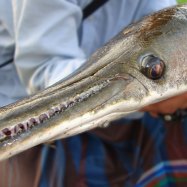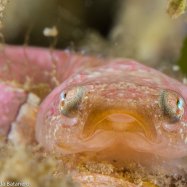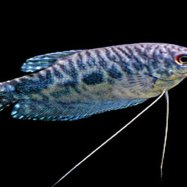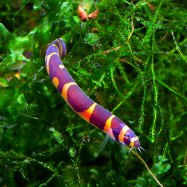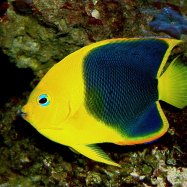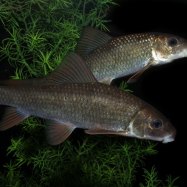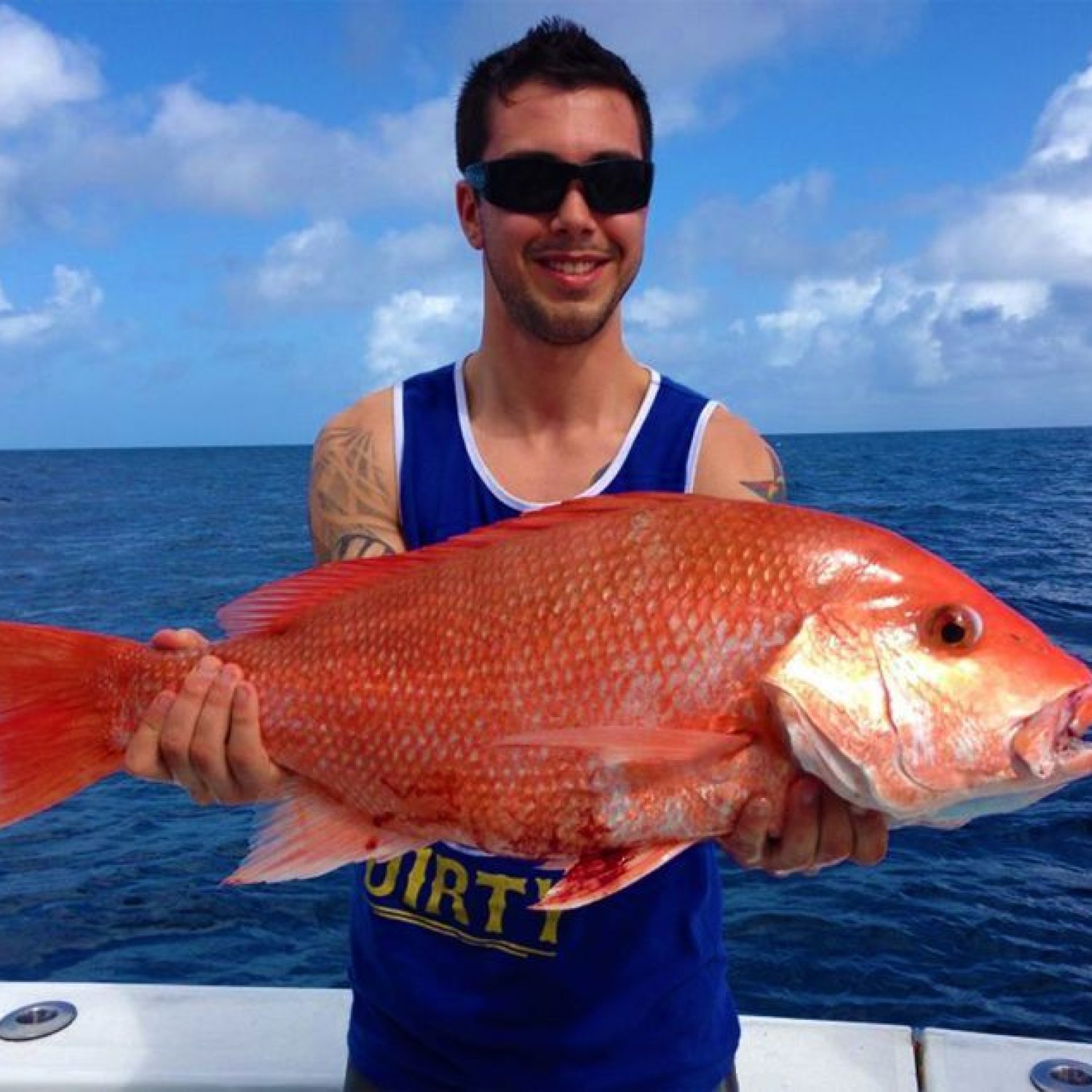
Vermilion Snapper
Vermilion Snapper do not display a distinct migration pattern, but they may move to deeper waters during the winter months.
Discover the elusive Vermilion Snapper - a popular fish that calls the United States its home. While its migration pattern remains a mystery, these beautiful fish come together in large groups to reproduce during the spawning season. With an average lifespan of 4 to 6 years, the Vermilion Snapper is a prized catch for anglers of all levels. Learn more about this intriguing fish and where to find it in this article.
Summary of Fish Details:
Common Name: Vermilion Snapper
Habitat: Vermilion Snapper can be found in a variety of habitats, including reefs, rocky bottoms, and offshore oil platforms. They prefer water depths of 50 to 300 feet.
Color: Vermilion Snapper are a bright red color with a silver sheen.
Vermilion Snapper: A Colorful and Fascinating Fish in the Atlantic Ocean
The ocean is home to a diverse array of marine life, from tiny creatures like plankton to enormous whales. But among this vast underwater world, there is one fish that stands out for its striking appearance and interesting behavior – the Vermilion Snapper.Also known by its scientific name of Rhomboplites aurorubens, this vibrant fish is commonly found in the western Atlantic Ocean, particularly in the United States. Let's dive into the fascinating world of Vermilion Snapper and discover what makes them such a unique and intriguing species Vermilion Snapper.
Habitat and Distribution
Vermilion Snapper can be found in a variety of habitats, including reefs, rocky bottoms, and offshore oil platforms. They prefer water depths of 50 to 300 feet, making them a mid-water species. In the western Atlantic Ocean, they are typically found from North Carolina to the Florida Keys and throughout the Gulf of Mexico.Interestingly, the preferred habitat of Vermilion Snapper can vary depending on their age. Juvenile snapper tend to inhabit shallow waters, while adults prefer deeper waters. This migration to deeper waters during adulthood is believed to help protect them from predators and also provides access to a more diverse range of food sources.
Feeding Habits
Vermilion Snapper feed near the bottom of the ocean, primarily on small fish, crustaceans, and cephalopods. They are opportunistic feeders and use their sharp teeth to capture and swallow their prey whole. Their diet also includes plankton, making them an important link in the marine food chain Viperfish.What makes their feeding behavior even more interesting is their ability to use different tactics depending on the situation. If food is scarce, they will actively hunt for prey. However, when food is abundant, they will use a sit-and-wait approach, conserving energy while waiting for prey to pass by.
Appearance and Characteristics
One of the first things you'll notice about Vermilion Snapper is their bright red color with a silver sheen. This striking coloration is what gives them their name, as Vermilion is a shade of red. Interestingly, their color can change depending on their mood, with a deeper red indicating aggression or excitement.Aside from their vibrant color, they also have a slender, elongated body with a pointed snout. This sleek shape allows them to glide through the water with ease, making them efficient hunters. Vermilion Snapper can grow up to 24 inches in length, although the average size for adults is between 12 and 18 inches.
One unique feature of this species is their ability to produce sound. They have a set of muscles that vibrate against their gas bladder, creating a drum-like sound that serves as a form of communication among themselves. This trait is more commonly seen in species like drums and croakers, making it a fascinating aspect of Vermilion Snapper behavior.
Reproduction and Behavior
Vermilion Snapper reproduce by spawning, with females releasing their eggs into the water. Fertilization occurs externally, where the male releases sperm to fertilize the eggs as they are released. Spawning usually occurs during late summer and early fall, and females can produce up to a million eggs during a spawning season.During the spawning season, Vermilion Snapper gather in large groups to reproduce, creating a spectacular sight for scuba divers and marine enthusiasts. These spawning aggregations typically occur around the edges of the reefs, making them vulnerable to overfishing. Therefore, there are strict regulations in place to protect these spawning sites and ensure the sustainability of this species.
Conservation Status
According to the International Union for Conservation of Nature (IUCN), Vermilion Snapper is listed as a species of Least Concern. Although commercial fishing for Vermilion Snapper is popular, the conservation measures in place have helped maintain healthy populations and prevent overfishing.However, it is important to note that habitat destruction, pollution, and climate change can also have an impact on the overall population of Vermilion Snapper, just like any other marine species. Thus, it is crucial to continue implementing sustainable fishing practices and protecting their habitats to ensure the continued survival of this beautiful fish.
In conclusion, the Vermilion Snapper is truly a remarkable fish that roams the depths of the Atlantic Ocean. From their vibrant red color to their unique behaviors and important role in the marine ecosystem, they are a species worth learning about and protecting. So, next time you're near the reefs or offshore platforms, keep an eye out for these fascinating creatures and admire their beauty.

Vermilion Snapper
Fish Details Vermilion Snapper - Scientific Name: Rhomboplites aurorubens
- Category: Fish V
- Scientific Name: Rhomboplites aurorubens
- Common Name: Vermilion Snapper
- Habitat: Vermilion Snapper can be found in a variety of habitats, including reefs, rocky bottoms, and offshore oil platforms. They prefer water depths of 50 to 300 feet.
- Feeding Habitat: Vermilion Snapper feed near the bottom of the ocean, primarily on small fish, crustaceans, and cephalopods.
- Feeding Method: They are opportunistic feeders and use their sharp teeth to capture and swallow their prey whole.
- Geographic Distribution: Vermilion Snapper are found in the western Atlantic Ocean, ranging from North Carolina to the Florida Keys and throughout the Gulf of Mexico.
- Country Of Origin: United States
- Color: Vermilion Snapper are a bright red color with a silver sheen.
- Body Shape: They have a slender, elongated body with a pointed snout.
- Length: Vermilion Snapper can grow up to 24 inches in length.
- Adult Size: Adult Vermilion Snapper typically range in size from 12 to 18 inches.
- Age: The age of Vermilion Snapper is difficult to determine, but they are believed to live between 4 and 6 years.
- Reproduction: Vermilion Snapper reproduce by spawning, with females releasing their eggs into the water. Fertilization occurs externally.
- Reproduction Behavior: During the spawning season, Vermilion Snapper gather in large groups to reproduce.
- Migration Pattern: Vermilion Snapper do not display a distinct migration pattern, but they may move to deeper waters during the winter months.
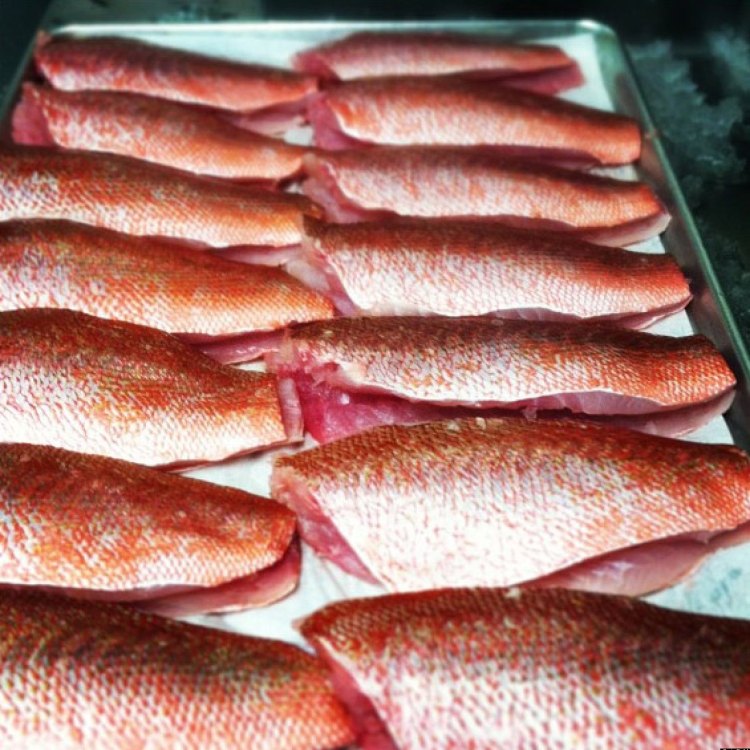
Vermilion Snapper
- Social Group: Vermilion Snapper are typically found in schools, although they may also be solitary.
- Behavior: They are a relatively docile species and are not known to be aggressive.
- Diet: Vermilion Snapper primarily feed on small fish, crustaceans, and cephalopods.
- Predators: Predators of Vermilion Snapper include larger fish species, such as groupers and sharks.
- Prey: Vermilion Snapper prey on small fish, crustaceans, and cephalopods.
- Environmental Threats: Environmental threats to Vermilion Snapper include overfishing and habitat destruction.
- Conservation Status: Vermilion Snapper are not currently listed as a threatened or endangered species.
- Special Features: They have sharp teeth and a bright red coloration, which allows them to camouflage with their reef habitats.
- Interesting Facts: Vermilion Snapper are known for their vibrant red coloration, which fades after death.
- Reproduction Period: The spawning season for Vermilion Snapper typically occurs in the spring and summer months.
- Nesting Habit: Vermilion Snapper do not build nests, as they reproduce through external fertilization.
- Lifespan: Vermilion Snapper have a lifespan of approximately 4 to 6 years.
- Habitat Threats: Habitat threats to Vermilion Snapper include oil spills, pollution, and destruction of coral reefs.
- Population Trends: The population of Vermilion Snapper is currently stable.
- Habitats Affected: Vermilion Snapper are affected by the destruction of coral reefs and other marine habitats.
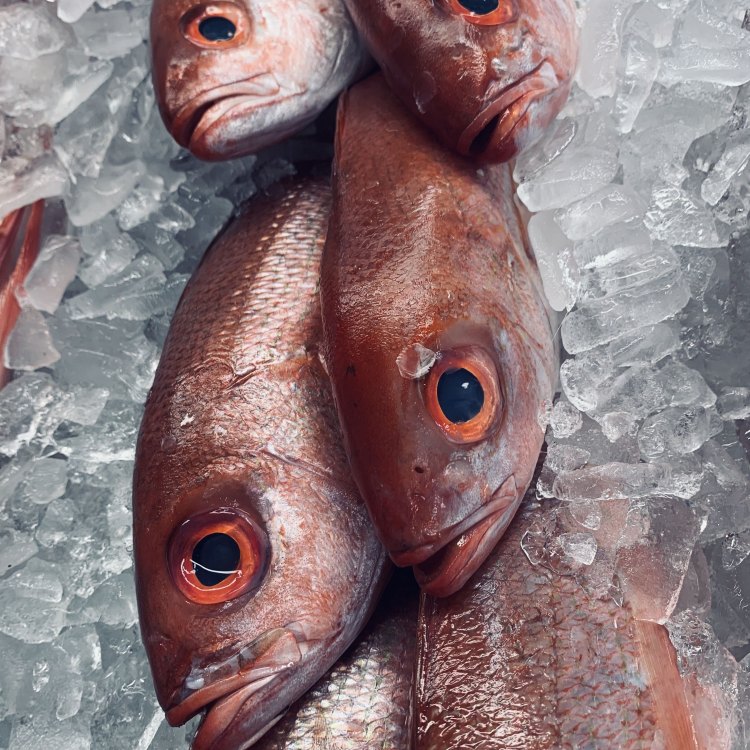
Rhomboplites aurorubens
The Fascinating Life of the Vermilion Snapper: An Insight into One of the Most Colorful Fish in the Sea
Amidst the vast blue expanse of the ocean, there lies a vibrant and colorful fish that is bound to catch your eye - the Vermilion Snapper. Found in the tropical and subtropical waters of the Atlantic Ocean, this species is not only a visual delight but also a fascinating creature. With their sharp teeth, red coloration, and unique behaviors, these fish have captured the attention of marine enthusiasts and researchers alike.The Vermilion Snapper, also known as the Beeliner or Red Snapper, is a type of fish that belongs to the Lutjanidae family RadioDouRosul.com. They can be found in the Western Atlantic from North Carolina to Brazil, as well as in the Gulf of Mexico and the Caribbean Sea. Let's dive deeper into the fascinating life of the Vermilion Snapper and discover what makes them so unique.
Social Behavior
Vermilion Snapper are social creatures, typically found in large schools. They tend to stick together in groups, although sometimes they may be solitary. These schools are often formed based on similar size and age of the fish. The Vermilion Snapper socialize through a variety of behaviors, including chasing and nipping at each other, in order to establish dominance within the group.During the day, they are active and social, but at night they tend to disperse and become more solitary. This change in behavior is most likely due to the natural feeding patterns of the fish, as well as reducing competition for resources within the group. Despite their social nature, Vermilion Snapper are not known to be aggressive towards other species or humans Vanjaram.
Diet and Predators
Vermilion Snapper are opportunistic predators, meaning they will eat whatever is available in their environment. Their diet primarily consists of small fish, crustaceans, and cephalopods such as squid and octopus. These fish are agile hunters, using their strong jaws and sharp teeth to catch their prey.However, Vermilion Snapper are not always at the top of the food chain. They have a number of predators, including larger fish species such as groupers and sharks. They also face competition for food from other fish, such as the Red Snapper. Despite these threats, the Vermilion Snapper is a resilient species, with a few unique features that aid in its survival.
Special Features: Teeth and Coloration
One of the most striking features of the Vermilion Snapper is its sharp teeth. These teeth are used for capturing and consuming their prey. They are not only sharp, but also curved, allowing the fish to easily grip and hold onto their food. This makes them efficient hunters, and it's a good thing too, as they need to consume large amounts of food in order to thrive.The Vermilion Snapper also has a bright red coloration, hence its name. This color serves as a natural camouflage, allowing them to blend in with the vibrant red hues of their coral reef habitats. This is a crucial defense mechanism, as it helps them avoid detection by predators and increases their chances of catching prey.
Interestingly, the vibrant red color of the Vermilion Snapper is not permanent. After the fish dies, its color gradually fades, making it more difficult for predators to spot. This phenomenon has led to another interesting fact about these fish.
Interesting Fact: The Vibrant Red Color Fades After Death
As mentioned above, the bright red color of the Vermilion Snapper is not permanent. This unique feature has led to an unusual fishing practice in some areas. Fishermen often use these fish as bait because their red color fades after death, making them less noticeable to other fish. This practice is not sustainable and has contributed to a decline in the population of the Vermilion Snapper in some areas.The fading of the red color after death also sheds light on the importance of conservation efforts for this species. As a food source, the Vermilion Snapper is an important part of the marine ecosystem. Overfishing and other environmental threats can have a significant impact on their population, and it's crucial to protect them in order to maintain the balance of the ocean.
Reproduction and Lifespan
Vermilion Snapper have a unique spawning pattern, with the majority of reproduction occurring in the spring and summer months. During this time, large groups of fish gather in certain areas to spawn. Interestingly, Vermilion Snapper do not build nests, as they reproduce through external fertilization. Females release their eggs into the water, where they are then fertilized by males.The eggs hatch into larvae and are left to fend for themselves, as the adult fish do not provide any parental care. Despite this, Vermilion Snapper have a relatively short lifespan, living only 4 to 6 years on average. This is an important factor to consider in maintaining healthy populations, as it may take several years for a population to fully recover from overfishing or other environmental threats.
Habitat and Environmental Threats
The Vermilion Snapper is a reef-dwelling fish, commonly found in areas with coral and other structures where they can hide and find food. Unfortunately, this also makes them vulnerable to various environmental threats. Destruction of their habitat, whether it be from pollution, coral bleaching, or oil spills, can have a significant impact on their population.In addition, overfishing is another major threat to the Vermilion Snapper. In some areas, they are caught as bycatch, while others specifically target these fish for their desirable traits such as taste and vibrant color. The implementation of sustainable fishing practices and protecting important habitats are crucial in ensuring the survival of this species.
Conservation Status
Despite the various environmental threats, the Vermilion Snapper is currently not listed as a threatened or endangered species. However, this does not mean that their population is not a cause for concern. The stable population trend may not be enough to sustain the species in the long run, and it's important for conservation efforts to continue in order to protect these fish.Furthermore, the decline in the population of the Vermilion Snapper can have a ripple effect on the marine ecosystem. As they are a food source for larger predators and help maintain balance in the coral reef ecosystem, their absence can have significant consequences.
Conclusion
In conclusion, the Vermilion Snapper is a fascinating and unique species, with its sharp teeth, bright red coloration, and social behavior. Their vibrant red color and natural camouflaging abilities make them a sight to behold in the coral reefs of the Atlantic Ocean. However, their population is facing various threats and it's important for us to understand and appreciate the role they play in the marine ecosystem.Through implementing sustainable fishing practices and protecting their habitats, we can ensure the continued existence of this colorful and captivating fish. The Vermilion Snapper not only adds to the beauty of our oceans, but also serves as a reminder of the delicate balance of nature and our responsibility to protect it.
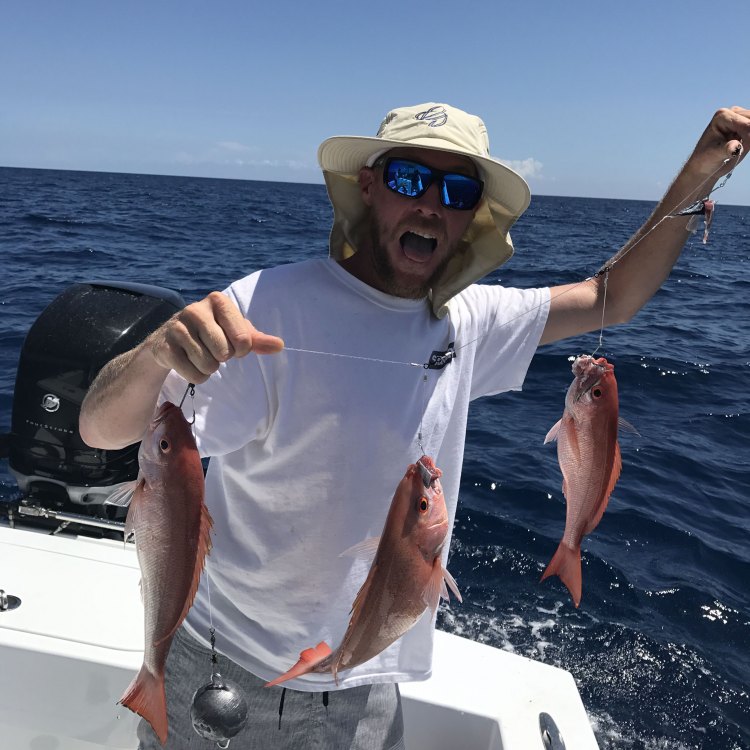
Vermilion Snapper: A Colorful and Fascinating Fish in the Atlantic Ocean
Disclaimer: The content provided is for informational purposes only. We cannot guarantee the accuracy of the information on this page 100%. All information provided here may change without prior notice.



